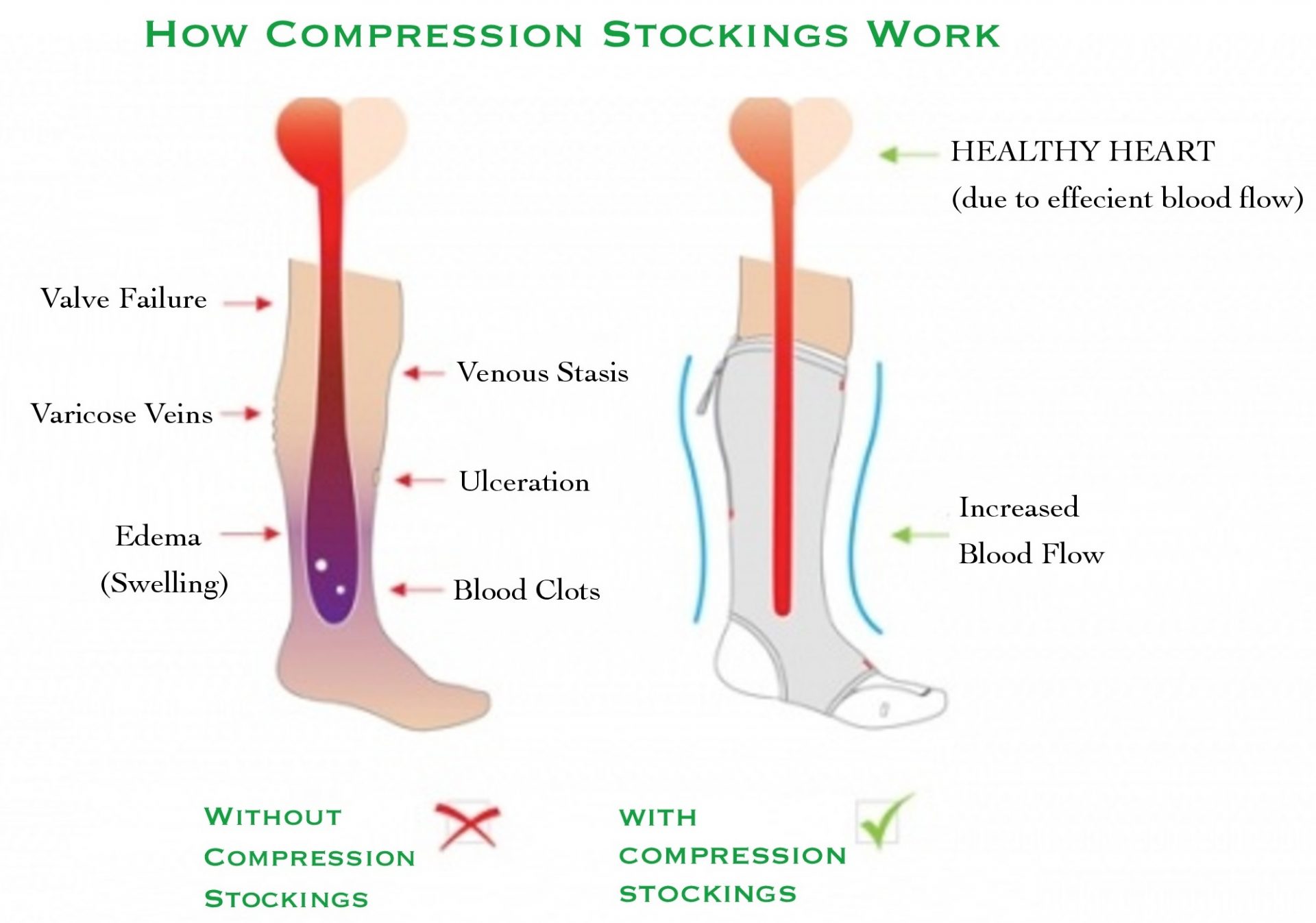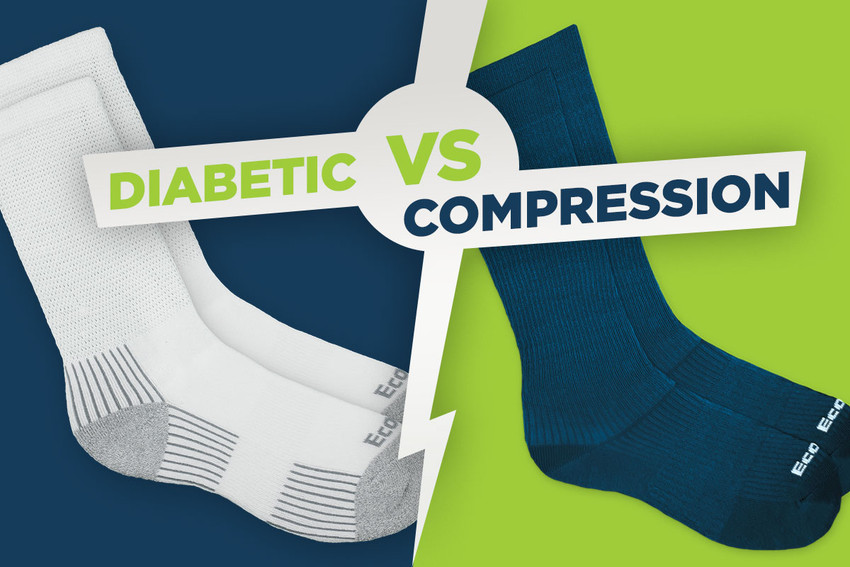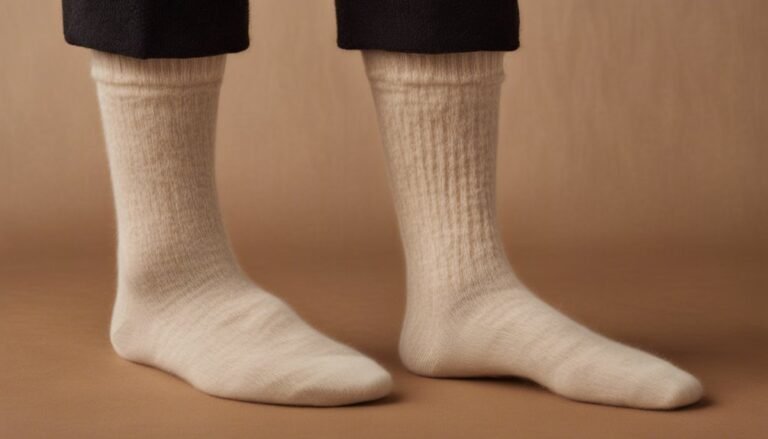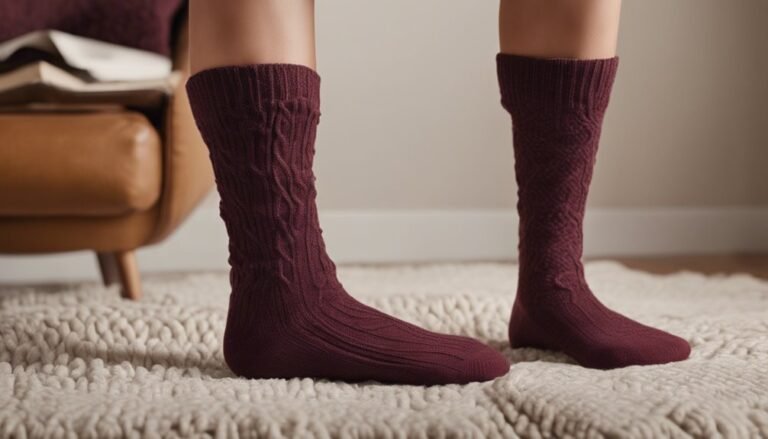Compression Socks Vs Regular Socks: Which is Best for You?
Compression socks and regular socks serve different purposes. While they may look similar, their functions vary significantly.
Understanding the differences between compression socks and regular socks can help you make better choices for your foot health and comfort. Compression socks are designed to improve blood flow and reduce swelling, making them ideal for medical conditions and long periods of inactivity.
Regular socks, on the other hand, are made for everyday wear, providing basic comfort and protection. Whether you are an athlete, a traveler, or someone with specific health needs, knowing which type of sock to wear can make a significant difference. This comparison will help you decide which sock suits your lifestyle and needs best.
Introduction To Socks
Socks are an essential part of our daily attire. They provide comfort, protection, and style. While we often overlook them, socks play a significant role in our overall foot health.
Purpose Of Socks
Socks protect our feet from friction and blisters. They absorb sweat, keeping our feet dry and odor-free. They also provide cushioning, which reduces the impact on our feet during activities.
Types Of Socks
Socks come in various types, each serving a specific purpose. Athletic socks offer extra padding and support for sports. Dress socks are thinner and more stylish, suitable for formal wear. Compression socks are a special type designed to improve blood flow.
Choosing the right type of sock can enhance comfort and performance. It can also prevent foot problems. The key is to understand your needs and select accordingly.

What Are Compression Socks?
Compression socks are specialized socks designed to improve blood flow. They apply gentle pressure to your legs and ankles, which helps blood move back to your heart. These socks are often used by people who stand or sit for long periods, athletes, or those with certain medical conditions.
Design And Features
Compression socks come in various designs and features tailored to different needs. They are made from elastic materials to provide the right amount of pressure. Most compression socks have a graduated compression design, meaning they are tighter at the ankle and gradually become less tight as they go up the leg.
- Graduated Compression: Tighter at the ankle, looser towards the knee.
- Elastic Material: Provides consistent pressure and comfort.
- Various Lengths: Available in knee-high, thigh-high, and full-length options.
- Breathable Fabric: Ensures moisture-wicking and ventilation.
These features make compression socks versatile for different activities and conditions.
How They Work
Compression socks work by applying pressure to your legs, helping veins push blood back to your heart. This reduces swelling and discomfort in the legs. By improving blood flow, they can also prevent blood clots and other circulatory issues.
| Benefit | Explanation |
|---|---|
| Improves Blood Flow | Keeps blood moving efficiently through the veins. |
| Reduces Swelling | Minimizes fluid buildup in the legs and feet. |
| Prevents Blood Clots | Lowers the risk of deep vein thrombosis (DVT). |
| Enhances Comfort | Provides support during long periods of standing or sitting. |
Compression socks are beneficial for anyone seeking better leg health. Their unique design and features make them superior to regular socks in various situations.
What Are Regular Socks?
Regular socks are everyday socks worn by people for comfort and protection. They come in a wide range of styles, colors, and materials. These socks are designed to cover your feet and sometimes the lower part of your legs. They help keep your feet warm, dry, and cushioned during daily activities.
People wear regular socks with different types of shoes and for various occasions. They are versatile and suitable for casual, formal, and athletic wear. Understanding the materials used and the common types can help you choose the right pair for your needs.
Materials Used
Regular socks are made from various materials. Common materials include cotton, polyester, wool, and nylon. Cotton is soft, breathable, and absorbs moisture. It is ideal for everyday use. Polyester is durable and dries quickly, making it suitable for sports. Wool provides warmth and insulation, perfect for colder weather. Nylon adds strength and elasticity, ensuring a snug fit.
Common Types
Regular socks come in many types. Ankle socks sit just above the ankle. Crew socks reach the mid-calf. They are often used for sports and casual wear. Knee-high socks cover the entire calf. People wear them with boots or for extra warmth. Dress socks are thinner and more formal. They pair well with dress shoes and suits. Athletic socks have extra cushioning and support for activities like running or hiking.
By knowing the materials and types of regular socks, you can choose the best pair for any occasion. Comfort and function go hand in hand when selecting the perfect socks for your needs.
Benefits Of Compression Socks
Compression socks have gained popularity for their numerous health benefits. They offer more than just comfort. Regular socks lack these specialized features. Let’s explore the key benefits of compression socks.
Improved Circulation
Compression socks are designed to promote blood flow. They provide graduated pressure. This means they are tighter at the ankle and looser as they go up the leg. This helps push blood back to the heart. Improved circulation can reduce the risk of blood clots. It can also prevent varicose veins.
Regular socks do not offer this benefit. They provide no pressure gradient. Therefore, they do not aid in blood flow. Compression socks are especially beneficial for those who sit or stand for long periods.
Reduced Swelling
Swelling, also known as edema, can be uncomfortable. It often occurs in the feet and legs. Compression socks help reduce swelling. They apply pressure to the tissues and veins. This helps prevent fluid buildup. People with conditions like diabetes or those who are pregnant may find relief from wearing them.
Regular socks do not provide the same level of support. They lack the necessary compression to reduce swelling effectively.
| Feature | Compression Socks | Regular Socks |
|---|---|---|
| Improves Circulation | Yes | No |
| Reduces Swelling | Yes | No |
| Pressure Gradient | Yes | No |
In summary, compression socks provide significant health benefits. They improve circulation and reduce swelling. Regular socks simply cannot offer these advantages.
Benefits Of Regular Socks
Regular socks are a staple in everyone’s wardrobe. They provide several benefits that make them an essential part of daily wear. From comfort to style, these socks offer features that cater to various needs and preferences.
Comfort And Versatility
Regular socks are designed for everyday comfort. They are often made from soft materials that feel good on your skin. Whether you are at home, work, or school, these socks offer the comfort you need. They are suitable for many activities and occasions.
These socks are versatile. You can wear them with different types of footwear. From sneakers to dress shoes, regular socks fit well. They do not restrict your movements. This makes them ideal for casual and formal settings alike.
Variety Of Styles
Regular socks come in a wide variety of styles. There are different colors, patterns, and lengths to choose from. This allows you to express your personal style. You can find socks that match your outfit or mood for the day.
There are options for every season. Lightweight socks are great for warm weather. Thicker socks keep your feet warm in the winter. This variety ensures you have the right socks for every situation.

When To Use Compression Socks
Compression socks are not just for athletes or the elderly. They serve specific purposes that regular socks cannot fulfill. Understanding when to use them can greatly benefit your health and comfort.
Medical Conditions
Compression socks are essential for managing certain medical conditions. People with varicose veins find them helpful. They improve blood flow and reduce swelling. Doctors often recommend them for patients with deep vein thrombosis. These socks help prevent blood clots. They also aid in recovery after surgery. Patients with chronic venous insufficiency benefit too. Compression socks can alleviate symptoms and improve quality of life.
Sports And Travel
Athletes wear compression socks for better performance. They reduce muscle fatigue during intense workouts. Runners and cyclists use them to enhance blood circulation. This helps in faster recovery. Frequent travelers also find them useful. Long flights can cause leg swelling. Compression socks reduce this risk. They keep your legs comfortable during long journeys. They are a must-have for anyone who spends long hours sitting or standing.
When To Use Regular Socks
When should you choose regular socks over compression socks? Regular socks are versatile and comfortable. They are suitable for many daily activities. Let’s explore some scenarios where regular socks are the best choice.
Daily Wear
Regular socks are ideal for everyday wear. They come in various materials like cotton, wool, and synthetic blends. This variety allows for comfort and breathability throughout the day. You can find them in different styles, colors, and patterns to match any outfit. Regular socks are usually lightweight and easy to wear. Perfect for any casual or formal setting.
| Material | Benefits |
|---|---|
| Cotton | Soft, breathable, and absorbent |
| Wool | Warm, moisture-wicking, and durable |
| Synthetic | Quick-drying and flexible |
Casual Activities
Regular socks are perfect for casual activities. These activities include walking, running errands, or lounging at home. They provide just the right amount of comfort without the extra compression. They allow your feet to breathe and stay comfortable during low-intensity activities.
- Walking the dog
- Grocery shopping
- Watching TV
- Reading a book
In these scenarios, regular socks are the clear winner. They offer flexibility and ease of use. They are easy to slip on and off. No fuss, just pure comfort.

Choosing The Right Socks For You
Choosing the right socks can make a significant difference in comfort and performance. Compression socks and regular socks serve different purposes. Understanding the differences helps you make the best choice for your needs.
Lifestyle Considerations
Your lifestyle plays a big role in deciding which socks to wear. Consider how active you are daily. Do you spend a lot of time standing or sitting?
- Active Lifestyle: If you exercise regularly, compression socks may be beneficial. They improve blood flow and reduce muscle fatigue.
- Sedentary Lifestyle: If you sit for long periods, compression socks can help prevent swelling and discomfort.
- Work Environment: If your job requires standing for long hours, compression socks can provide added support and comfort.
Personal Preferences
Personal preferences also play a crucial role in your choice of socks. Comfort, style, and material are important factors.
Comfort: Regular socks come in various thicknesses and materials. Choose according to your comfort level. Compression socks, on the other hand, are snug and supportive.
Style: Regular socks offer a wide range of styles and colors. Compression socks have fewer style options but are available in different lengths and compression levels.
Material: Regular socks are made from materials like cotton, wool, or synthetic blends. Compression socks are usually made from a blend of nylon and spandex, providing elasticity and support.
| Factor | Regular Socks | Compression Socks |
|---|---|---|
| Comfort | Varies by material | Snug and supportive |
| Style | Wide range of options | Limited but functional |
| Material | Cotton, wool, synthetic | Nylon, spandex blend |
Choosing the right socks depends on your lifestyle and personal preferences. Assess your daily activities and comfort needs to make an informed decision.
Frequently Asked Questions
Are Compression Socks Better Than Regular Socks?
Compression socks improve circulation and reduce swelling. Regular socks offer comfort but lack these benefits. Choose based on your needs.
Is It Ok To Wear Compression Socks If You Don’t Need Them?
Yes, it’s generally safe to wear compression socks without a medical need. They can improve circulation and reduce swelling. Ensure proper fit to avoid discomfort.
How Do You Know If You Need Compression Socks?
You may need compression socks if you experience swelling, fatigue, or pain in your legs. Consult a doctor for advice.
How Many Hours A Day Should You Wear Compression Socks?
Wear compression socks for 6-8 hours a day. Consult your doctor for personalized advice. Remove them before bed.
Conclusion
Choosing between compression socks and regular socks depends on your needs. Compression socks offer health benefits. They improve circulation and reduce swelling. Regular socks provide comfort for everyday wear. Think about your lifestyle. Are you on your feet a lot?
Do you have circulation issues? Compression socks might be for you. For casual, everyday use, regular socks work well. Both types have their place. Consider what suits you best. Your feet will thank you.







